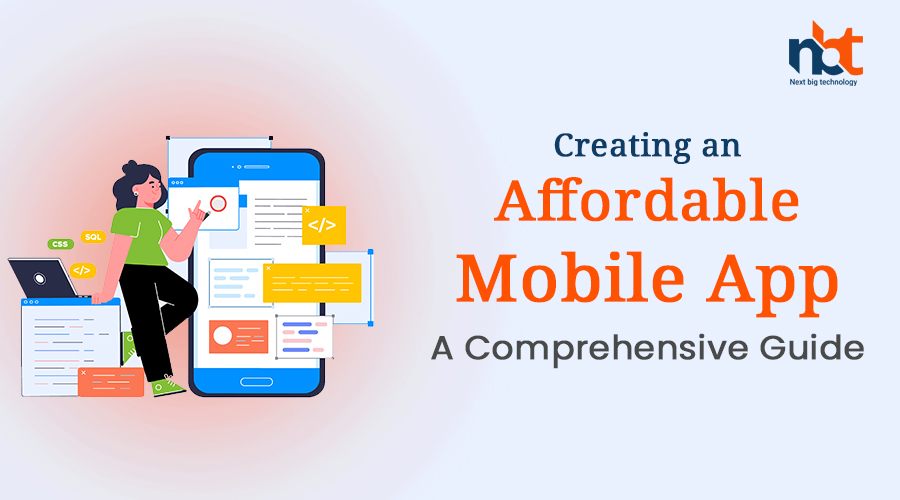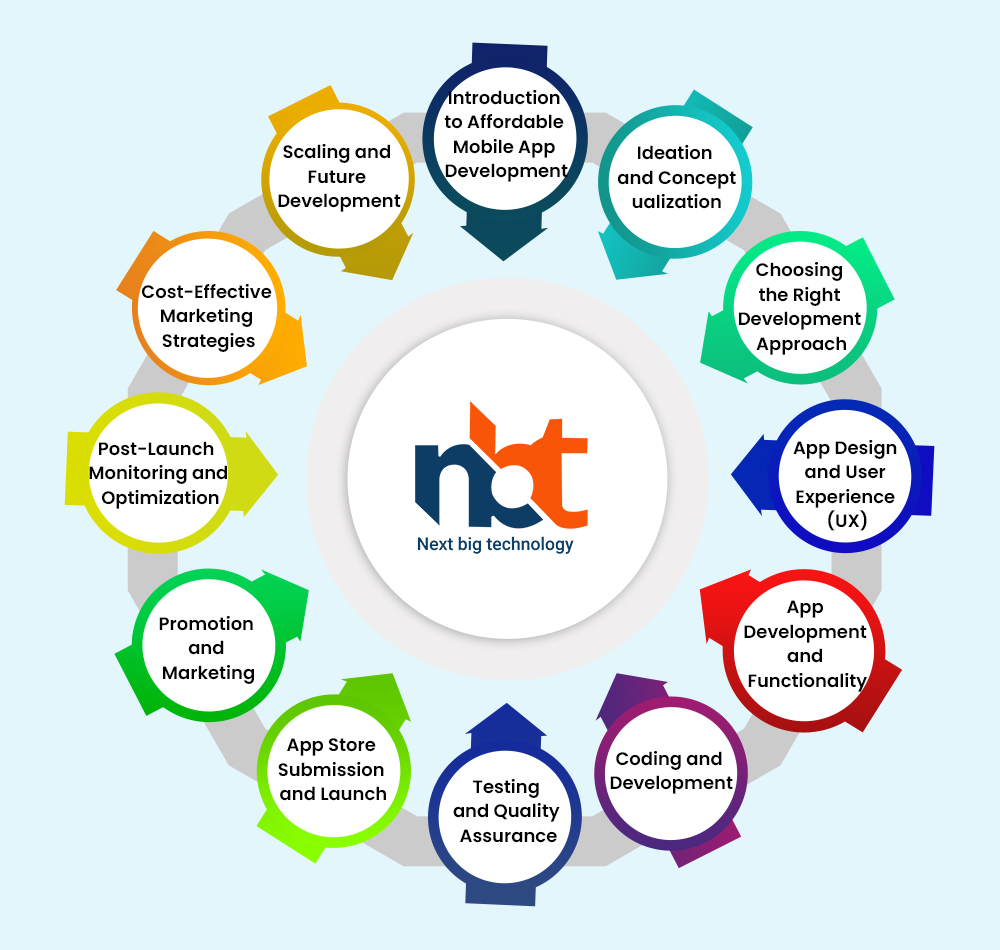In the fast-paced digital world, mobile apps have become essential tools for businesses, startups, and individuals to reach their target audience and offer convenient solutions. However, the misconception that mobile app development is expensive often discourages many from pursuing this avenue. In this comprehensive guide, we’ll explore practical strategies and steps to create an affordable mobile app without compromising on quality.
Table of Contents
Introduction to Affordable Mobile App Development
- Understanding the Significance of Mobile Apps in the Digital Landscape
- Debunking Myths About Costly Mobile App Development
Ideation and Conceptualization
Define Your App’s Purpose
- Clarifying the Problem Your App Solves or the Value It Offers
- Setting Clear Objectives for Your App’s Functionality
Market Research and Analysis
- Studying Similar Apps in Your Niche for Insights
- Identifying Gaps and Opportunities in the Market
Budget Allocation
- Setting a Realistic Budget for Your Mobile App Project
- Allocating Resources for Development, Design, and Marketing
Choosing the Right Development Approach
Native vs. Cross-Platform Development
- Understanding the Differences Between Native and Cross-Platform Apps
- Evaluating the Pros and Cons of Each Approach
Low-Code/No-Code Platforms
- Exploring User-Friendly Platforms for Rapid App Development
- Assessing Their Suitability for Your App Idea
App Design and User Experience (UX)
User-Centered Design
- Prioritizing User-Friendly Interfaces and Intuitive Navigation
- Designing with the User’s Journey in Mind
Pre-Designed Templates and UI Kits
- Using Ready-Made UI Elements and Templates
- Customizing Templates to Reflect Your Brand Identity
Simple and Effective Design
- Embracing Minimalism to Enhance User Experience
- Focusing on Clean Layouts and Visual Consistency
App Development and Functionality
Core Features and MVP Approach
- Identifying Essential Features for Your Minimum Viable Product (MVP)
- Focusing on Core Functionality to Launch Quickly
Third-Party Integrations
- Exploring Affordable APIs and Libraries for Additional Functionality
- Incorporating Payment Gateways, Maps, Social Media, etc.
Coding and Development
DIY Development
- Learning Basic App Development Skills if You’re Up for the Challenge
- Exploring Online Resources and Tutorials
Outsourcing Development
- Hiring Freelance Developers or Development Agencies
- Evaluating Candidates Based on Skills and Experience
Testing and Quality Assurance
Thorough Testing
- Conducting Rigorous Testing of App Functionality and UI
- Identifying and Rectifying Bugs and Errors
User Testing
- Inviting Friends, Family, or Colleagues to Test Your App
- Gathering Feedback to Improve User Experience
App Store Submission and Launch
App Store Guidelines
- Familiarizing Yourself with App Store Submission Requirements
- Ensuring Your App Complies with Guidelines
App Store Optimization (ASO)
- Optimizing Your App’s Title, Description, and Keywords
- Selecting Eye-Catching Screenshots and App Icons
App Launch Strategy
- Creating Buzz Before Launching Your App
- Teasing Your App’s Features on Social Media
Promotion and Marketing
Social Media Promotion
- Leveraging Social Media Platforms to Promote Your App
- Sharing Updates, Features, and Teasers
Leveraging User Feedback
- Listening to User Feedback and Making Iterative Improvements
- Showing Users that Their Input Matters
Post-Launch Monitoring and Optimization
User Engagement Analysis
- Tracking User Behavior and Engagement Patterns
- Using Analytics to Identify Popular Features and Pain Points
Regular Updates
- Continuing to Improve and Enhance Your App’s Functionality
- Releasing Updates Based on User Feedback
Cost-Effective Marketing Strategies
Content Marketing
- Creating Relevant and Informative Content About Your App’s Niche
- Sharing Blog Posts, Infographics, or Videos
Influencer Collaborations
- Partnering with Micro-Influencers or Niche Experts
- Leveraging Their Audience to Gain App Visibility
App Communities and Forums
- Participating in App-Related Communities and Forums
- Sharing Your App and Engaging with the Community
Scaling and Future Development
Gathering User Feedback
- Encouraging Users to Share Their Experiences and Suggestions
- Incorporating User Ideas for Future Updates
Adding Advanced Features
- Gradually Introducing Advanced Functionality Based on User Demand
- Expanding Your App’s Offerings Over Time
Conclusion
Creating an affordable mobile app is a realistic goal with careful planning, resourceful execution, and a commitment to delivering value. By leveraging cost-effective strategies, development approaches, and marketing efforts, you can build a mobile app that resonates with your audience and addresses their needs, without breaking the bank. The key lies in understanding your target users, embracing efficient development practices, and maintaining a user-centered focus throughout the app creation journey.



















